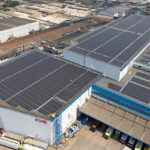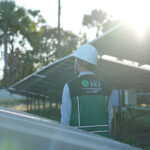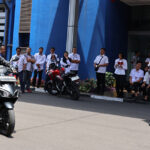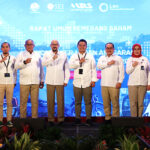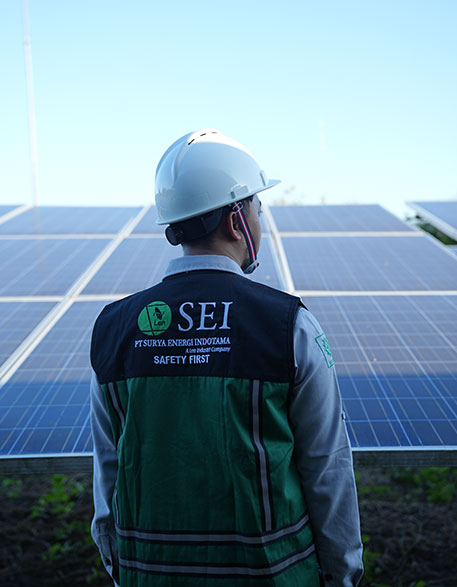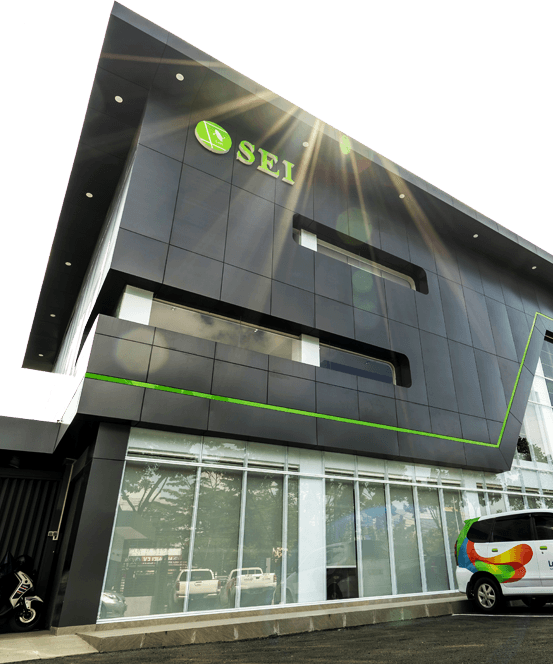Month: August 2024
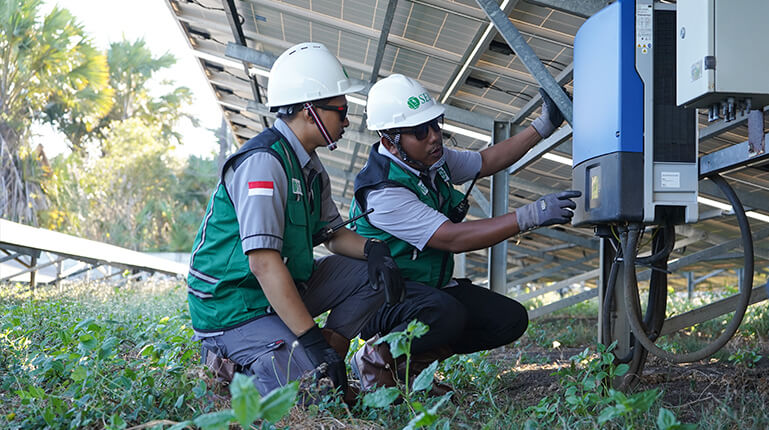
The Importance of Monitoring Solar Power Plant Performance to Optimize Use
In an era where awareness of climate change is increasing, the use of renewable energy sources such as Solar Power Plants (PLTS) is becoming increasingly important. PLTS is an effective solution to reduce dependence on fossil fuels and reduce carbon emissions. However, in order for PLTS to provide maximum benefits, continuous performance monitoring is the main key. Here are some reasons why monitoring PLTS performance is important.
- Identifying and Addressing Problems Early
One of the main reasons why monitoring PLTS performance is very important is to identify and address problems early. Without proper monitoring, technical problems or damage to the PLTS system may go undetected until they cause a significant decrease in energy production efficiency. By using sophisticated monitoring devices, problems such as dirt on solar panels, damage to components, or interference with the energy storage system can be identified early. Prompt handling of problems can prevent unnecessary energy losses and ensure that the system is operating at its optimal capacity.
- Improving System Efficiency and Performance
Monitoring PLTS performance allows system owners to obtain real-time data on energy production, consumption, and overall efficiency. This data is invaluable for operational analysis and adjustments. For example, by monitoring the tilt angle and orientation of solar panels, system owners can optimize the position of the panels to capture more sunlight. In addition, historical data analysis can help plan more effective maintenance and repairs, as well as predict and address potential efficiency declines before they become major problems.
- Optimizing Energy Usage and Cost Reduction
Effective monitoring not only helps maintain the performance of the solar PV system but also optimizes energy usage. With accurate information about energy production and consumption, users can adjust their energy usage patterns to maximize efficiency. For example, energy generated during peak sunlight can be stored and used during times when energy production is low. This not only reduces dependence on energy from other sources but can also reduce electricity costs and increase economic savings.
Monitoring the performance of solar PV is a crucial element in ensuring that the system is operating at maximum efficiency and delivering the expected benefits. By utilizing advanced monitoring technology, we can identify problems early, improve system efficiency, optimize energy use, support environmental sustainability, and strengthen partner trust. All this contributes to the development of a more sustainable and environmentally friendly future, where renewable energy sources play a central role in meeting global energy needs.
Berita Lainnya
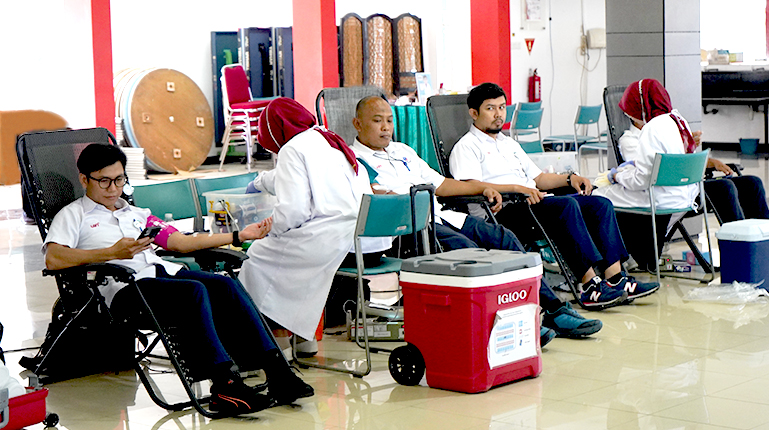
SEI Participation in Blood Donation: Real Action for Health and Humanity
Bandung 19/08/24, SEI participated in a blood donation activity organized by HSE Len Industri Company, located at Graha PT Len Industri (Persero). This activity is a routine company program and is part of the company's commitment to support humanitarian action and employee health.
The event was also attended by I Made Sandika Dwiantara, President Director of SEI, and Ridwan Kurnia, Director of Marketing and Business Development of SEI. This confirms SEI's support for social activities that have a positive impact on employees.
Moiko Sivatino, General Manager of Health, Safety & Environment of PT Len Industri (Persero), in his statement said that the main purpose of this blood donation activity is to provide real action in humanity. "This activity is a form of our concern for employees and an effort to improve employee health. By donating blood, we hope to help those in need and at the same time encourage a spirit of togetherness in our work environment," said Moiko.
This blood donation activity received a positive response from all participants, including SEI employees. In addition to being a form of social contribution, this event also provides an opportunity for employees to participate in activities that are beneficial for health and safety.
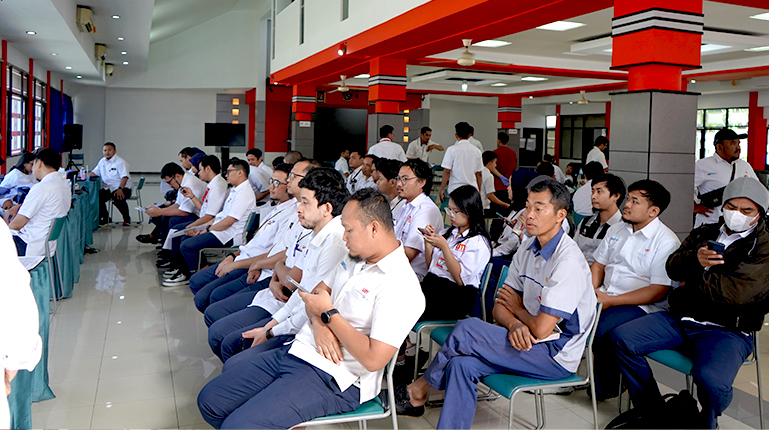
As part of the series of events, blood donors were given information about the importance of blood donation and safe and comfortable procedures. This activity not only provides direct benefits to blood recipients, but also raises awareness among employees about the importance of participating in humanitarian activities.
By participating in this activity, SEI shows its commitment to not only focus on business achievements, but also on social and humanitarian responsibilities.
Berita Lainnya
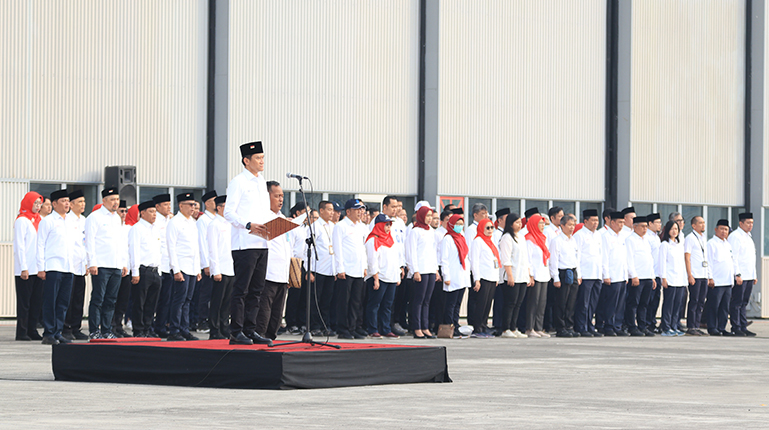
Togetherness in Independence: SEI Holds Centralized Flag Ceremony with DEFEND ID
Bandung (17/08/24), In order to commemorate the 79th anniversary of the independence of the Republic of Indonesia, the Board of Directors and all employees of PT Surya Energi Indotama participated in the flag ceremony held centrally by Holding DEFEND ID at the Apron Hangar Delivery Center of PT Dirgantara Indonesia.
The ceremony began at 07.00 WIB which began with the raising of the red and white flag by the ceremony officer. An atmosphere full of solemnity and pride was felt filling the hangar area which is usually used for company operational activities.
President Director of PT Len Industri (Persero), Bobby Rasyidin as the parent of Holding DEFEND ID acted as the Inspector of the Ceremony. In his speech, Bobby emphasized the meaning of independence in the modern era. "Freedom is not only free from colonizers, but also includes the freedom to develop, create and innovate for a better future," he said.
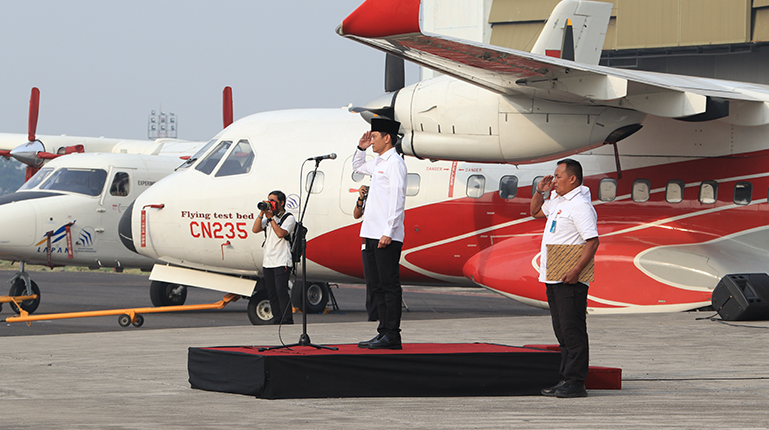
He continued, "The challenges faced today are no less great than in the past. In the era of globalization and technological advancement, we are faced with increasingly tight competition in the fields of economy, education, and socio-culture. Therefore, we must adapt, improve our quality, and work hard to keep this independence meaningful for future generations."
This event is not only a momentum to remember past struggles but also a reminder for all employees to continue to innovate and contribute to the progress of the nation amidst global competition. Not only that, all employees who attended showed high enthusiasm in commemorating this historic day, which also emphasized the commitment to the progress and sustainability of the company.
The spirit of independence built on this day is expected to continue to inspire and motivate all employees to give their best in every aspect of their lives and work.
Berita Lainnya
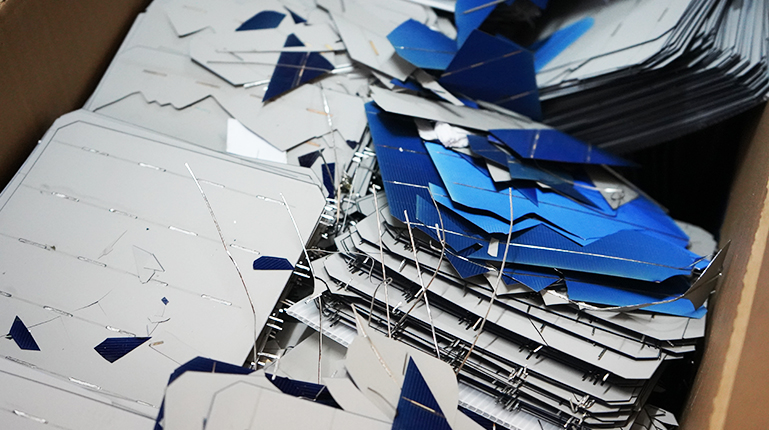
It Turns Out This Is How Solar Panel Waste Management Works
With the increasing development of renewable energy technology, solar panels have become one of the main solutions to reduce dependence on fossil fuels. PT Surya Energi Indotama (SEI), as one of the Pioneers in the new and renewable energy industry, especially solar energy in Indonesia, is committed to managing waste from solar panels in an environmentally friendly manner and in accordance with applicable regulations.
In the process of producing and using solar panels, there are several types of Hazardous and Toxic Materials (B3) waste produced, including:
1. Solar Cell Reject
Solar cells that do not meet quality standards and cannot be used in solar panels. These cells often contain hazardous chemicals such as silicon and heavy metals. In addition, they are categorized as B3 waste because their sharp texture can be dangerous and injure those who hold them if they do not use special gloves.
2. Flux and Riz
Chemicals used in the soldering process and manufacturing of solar panels. Flux containing hazardous chemicals can become B3 waste if not managed properly such as after its expiration date has expired which can cause irritation.
3. Backsheet
The protective back sheet of a solar panel is made of plastic or composite material. Unused backsheets contain chemicals that can pollute the environment.
4. Tin Metal
Used in soldering processes and as a component in solar panels. Tin metal in waste can potentially pose health and environmental risks if not managed properly and takes a long time to decompose if simply thrown away.
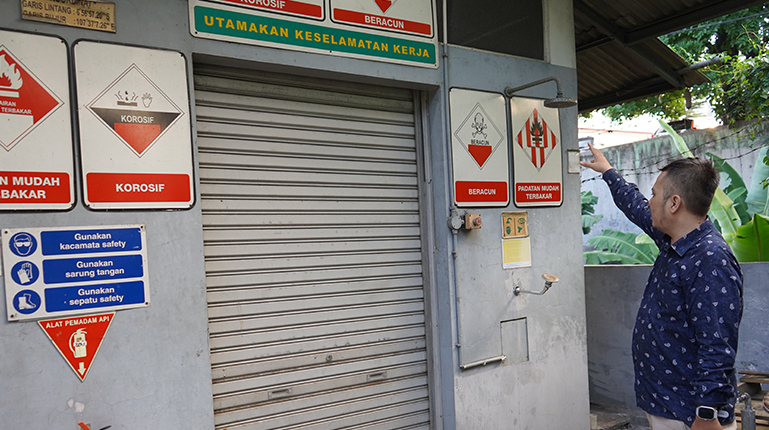
B3 Waste Management
PT Surya Energi Indotama has implemented strict B3 waste management procedures to ensure that solar panel waste is handled in a proper manner and minimizes negative impacts on the environment. The following are the main steps in B3 waste management:
1. Sorting and Collection
Waste from solar panels is sorted based on its type and characteristics. Reject solar cells, flux and riz, backsheet, and tin metal are collected in special containers according to their type.
2. Handling and Storage
After being sorted, B3 waste is stored in a temporary storage area (TPS) that meets safety and environmental standards. This TPS is designed to prevent contamination and leakage that can harm the environment.
3. Processing and Recycling
The collected B3 waste will be further processed for processing or recycling. Solar cells that are no longer usable may be processed to extract valuable materials or sent to a licensed hazardous waste treatment facility.
4. Reporting and Documentation
PT Surya Energi Indotama routinely reports the amount of B3 waste produced and managed to the authorities. This documentation is important to ensure compliance with regulations.
After the storage period at the TPS, B3 waste will be transported by PT Prasadha Pamunah Limbah Industri (PPLI), which is a third party competent in B3 waste management. PPLI will take over the responsibility for transporting waste to the appropriate processing facility, ensuring that all steps are carried out in accordance with applicable regulations and standards.
The management of B3 waste from solar panels is an important aspect of PT Surya Energi Indotama's environmental responsibility. By following strict procedures in waste sorting, collection, storage, and processing, the company not only complies with existing regulations but also contributes to environmental protection efforts. Collaboration with PPLI for further transportation and processing ensures that B3 waste is handled in a safe and efficient manner.
Berita Lainnya
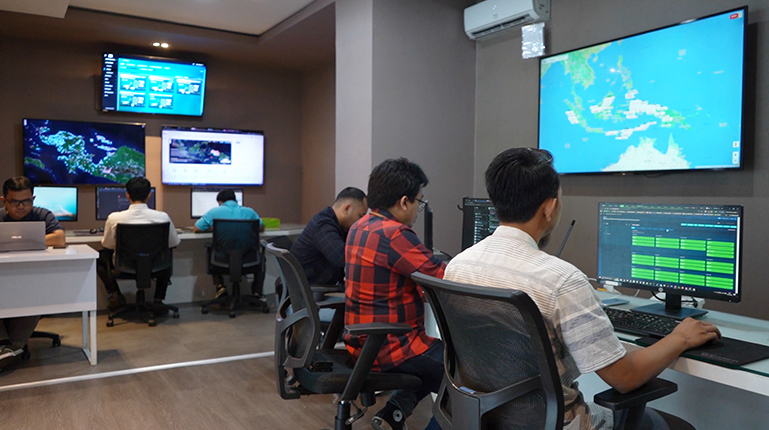
Getting to Know NOC PT Surya Energi Indotama: Understanding the Role and Function in the Energy Industry
Amidst the increasing need for energy and the push to switch to more environmentally friendly energy sources, PT Surya Energi Indotama has emerged as one of the key players in the renewable energy industry in Indonesia. One important aspect of SEI's operations is the Network Operation Center (NOC), which plays a crucial role in maintaining the smoothness and efficiency of the energy systems that have been installed throughout Indonesia.
What is a Network Operation Center (NOC)?
The Network Operation Center (NOC) is a control center that is responsible for monitoring, managing, and optimizing information and communication technology networks and infrastructure. In the context of PT Surya Energi Indotama, the NOC focuses on supervising the renewable energy systems that the company manages, including solar power plants, energy storage systems, and energy distribution networks.
The SEI NOC team itself works 24 hours a day, 7 days a week, with the aim of accelerating resolution when problems occur at the location and at the same time being able to monitor the performance of each service so that disruptions can be mitigated.
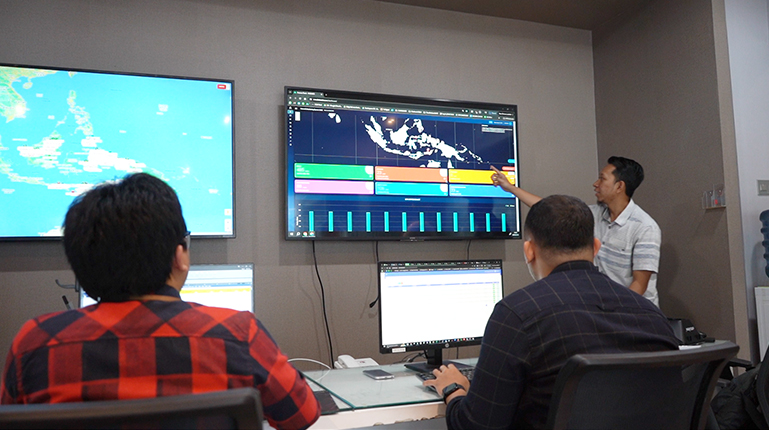
Main Functions of NOC SEI
1. Real-Time Monitoring
The SEI NOC is tasked with monitoring the operational conditions of the energy system in real time. This includes monitoring data from solar panels, inverters, battery storage systems, and other components. With this monitoring, the NOC can detect potential problems or disruptions as quickly as possible and take necessary actions to prevent greater impacts.
2. System Performance Management
In addition to monitoring, the NOC is also responsible for managing the performance of the energy system. This involves analyzing data to ensure that all components are operating at optimal efficiency and making adjustments if necessary to increase energy output or reduce losses.
3. Troubleshooting and Technical Support
The SEI NOC is the central point for technical problem solving. When a disruption or damage occurs, the NOC team can immediately respond by performing diagnosis and repairs. They also coordinate with the field team to handle the problem directly.
4. Planning and Development
In addition to day-to-day operational functions, NOCs also play a role in energy infrastructure planning and development. They analyze operational data to plan improvements, upgrades, or expansions of existing systems.
5. Security and Compliance
Security aspects are very important in NOC operations. They ensure that all systems and data are protected from cyber threats and meet applicable compliance standards. This includes monitoring for suspicious activity and implementing necessary security measures.
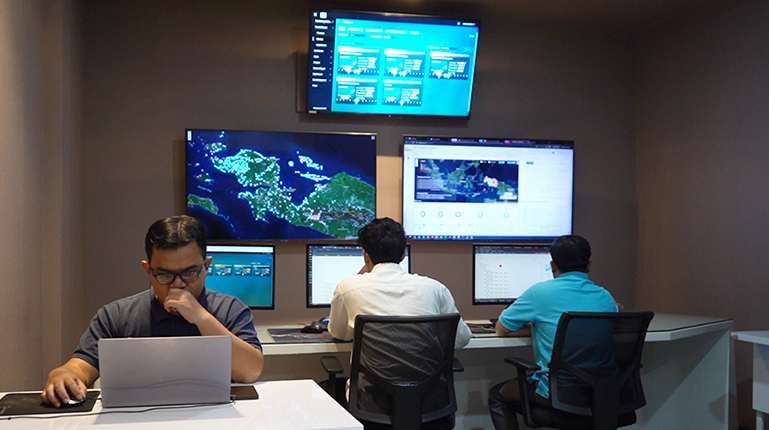
Technologies Used in NOC SEI
NOC SEI uses a variety of advanced technologies to perform its functions. Some key technologies include:
- Monitoring and Control System: To monitor the condition and performance of the energy system in real-time.
- Big Data Analytics: To analyze big data generated by energy systems and identify patterns or potential problems.
- Cyber Security: To protect systems from digital threats and maintain data integrity.
The role of the SEI NOC is vital to the success of the company's operations. With the NOC, SEI can ensure that the renewable energy generation system operates optimally and reliably. This not only increases efficiency and reduces downtime, but also helps in strategic planning and future development.
The existence of the NOC allows SEI to adapt to changes in demand and technical challenges that may arise. With a proactive and data-driven approach, the SEI NOC helps companies achieve sustainability and efficiency goals.
The SEI NOC is an integral component of the company's operational structure that manages the renewable energy system. Through effective monitoring, management and analysis, the NOC ensures that all components of the energy system are functioning properly and in accordance with established standards. With this crucial role, SEI can continue to provide efficient and sustainable energy solutions to meet future needs.
